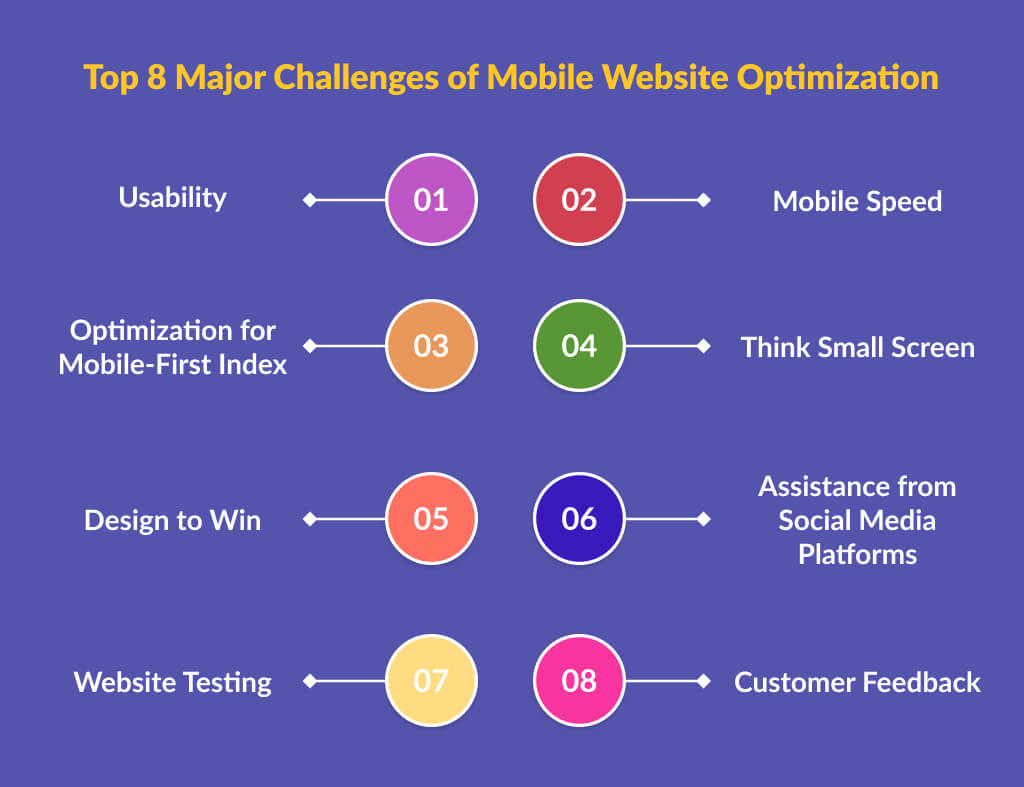Boost Your Brand with Comprehensive Mobile Optimization Solutions
Boost Your Brand with Comprehensive Mobile Optimization Solutions
Blog Article

The Ultimate Guide to Mobile Optimization: Techniques for Enhancing Internet Site Efficiency on Smartphones and Tablets
The strategies for enhancing website efficiency on mobile systems go past mere adaptation; they encompass an extensive technique that entails receptive layout, rate optimization, material techniques, and individual experience improvements. By delving into the complexities of mobile optimization, companies can not just meet individual expectations but also remain ahead in a competitive digital landscape.
Importance of Mobile Optimization
Mobile optimization plays an essential function in boosting customer experience and driving conversion prices in the ever-evolving electronic landscape. With the raising usage of smartphones and tablet computers for searching the internet, ensuring that websites are optimized for mobile devices has become necessary for companies - Mobile Optimization. A mobile-optimized website not just adapts perfectly to various screen dimensions but additionally lots quickly, supplying individuals with a smooth and delightful browsing experience
In today's busy world, individuals anticipate immediate access to information on the go. A website that is not optimized for mobile phones risks shedding prospective clients due to reduce loading times or a bad individual interface. By purchasing mobile optimization, services can cater to the demands of their mobile audience, causing greater involvement and boosted conversions.
Additionally, search engines like Google focus on mobile-friendly web sites in their positions, making mobile optimization necessary for improving presence and drawing in natural web traffic. Mobile Optimization. On the whole, the significance of mobile optimization can not be overstated, as it straight influences user fulfillment, conversion prices, and total service success in the electronic world
Responsive Design Techniques
Implementing receptive style strategies ensures that internet sites dynamically adjust their format and content based upon the individual's tool screen size, providing a consistent user experience across numerous systems. One of the most common methods used in receptive style is developing fluid grids that allow web content to resize proportionally to the screen size. This makes sure that aspects on the page preserve their loved one spacing and arrangement, optimizing the viewing experience for customers on different gadgets.
Additionally, utilizing adaptable images that can scale with the dimension of the viewport aids protect against pictures from being chopped or distorted on smaller screens. CSS media queries play a crucial role in responsive layout by allowing programmers to apply particular designs based on the tool attributes such as screen size, elevation, and orientation. By leveraging media inquiries, web sites can adapt their layout and design to match smartphones, tablet computers, and desktop computer displays web perfectly.
Incorporating receptive style techniques not just improves user experience but additionally adds to improved online search engine rankings, as internet search Website engine like Google prioritize mobile-friendly web sites in their mobile search results page. By embracing receptive style, web sites can satisfy the diverse needs of individuals accessing content on a range of tools, eventually driving engagement and conversions.
Rate and Performance Optimization

One secret method is maximizing images and multimedia content to lower file dimensions without compromising top quality. Compressing photos, leveraging modern-day photo formats like WebP, and careless loading offscreen photos are efficient approaches to speed up lots times (Mobile Optimization). Minimizing HTTP demands, leveraging web browser caching, and lowering server action times are critical steps in improving efficiency.
Implementing a material shipment network (CDN) can also significantly improve web site speed by distributing content throughout numerous web servers worldwide, minimizing latency for users accessing the site from various areas. Prioritizing critical above-the-fold content and deferring non-essential scripts can further look at this site boost perceived efficiency. By focusing on speed and efficiency optimization, internet sites can deliver a smooth and enjoyable user experience on mobile phones.
Mobile-Friendly Web Content Methods
Mobile-friendly content approaches entail customizing the presentation of information to fit the smaller sized screens and on-the-go nature of smartphone and tablet individuals. In addition, breaking up material into much shorter paragraphs and utilizing bullet factors can aid improve readability and make it much easier for customers to eat details quickly.
Integrating appealing visuals, such as images and videos enhanced for mobile watching, can likewise improve the general user experience. These visuals should be appropriate, top quality, and load swiftly to stop individuals from wearying. In addition, incorporating interactive components like quizzes, polls, or studies can boost customer involvement and encourage active engagement.
Individual Experience Enhancements
Structure on the foundation of mobile-friendly material techniques, boosting user experience requires maximizing every touchpoint to ensure seamless interaction and contentment for mobile customers. One crucial aspect of enhancing customer experience on smart phones is making sure quick packing times. Individuals anticipate sites to fill swiftly on their smart devices and tablets, and any delays can bring about disappointment and raised bounce rates. Carrying out receptive layout is one more key aspect in enhancing customer experience. Receptive design ensures that sites adjust to different display sizes and resolutions, offering a regular and easy to use experience throughout various tools.
Optimizing kinds for mobile individuals by lessening the number of fields and using auto-fill features can likewise enhance the general user experience. By concentrating on these customer experience improvements, sites can effectively engage and maintain mobile site visitors.
Final Thought
To conclude, mobile optimization is important for boosting web site performance on mobile phones and tablet computers. By executing responsive design methods, enhancing speed and performance, developing mobile-friendly content, and improving customer experience, businesses can properly reach and engage with their mobile audience. It is necessary for sites to adapt to the boosting mobile usage patterns in order to remain affordable in the digital landscape.
Report this page